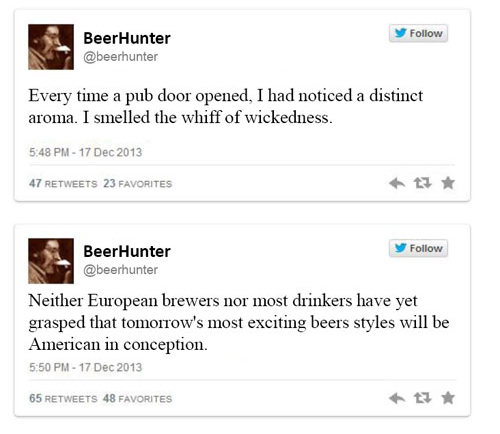MONDAY BEER & WINE LINKS, MUSING 4.11.16
It seems not all of the stories, or tweets, I found last week were written with rose-colored beer goggles on.
Black Acre Brewery’s Jason Gleason’s viral post on sexism shouldn’t be remarkable.
[Via Time Out]
Gendered Wine Marketing Is Still All Too Real.
[Via Punch]
“It should be totally normal to treat women like people.” Take the time to read the first post, at a minimum.
The Crony Capitalists of Craft Beer.
“It’s easy to understand why politicians like funding breweries. They get to play with other people’s money, and much like when funding a new sports arena, they get to associate themselves with a product that many voters consider fun and pleasant. But the economic benefits are dubious.” And: “Lowering these barriers or making it easier for businesses to navigate them would encourage entrepreneurship across the board, rather than concentrating benefits on big breweries that cultivate political connections.” [Via Reason.com]
Why one of the nation’s premier beer festivals seems to have lost its luster.
And I thought slow ticket sales were because I am going to be there. [Via Washington Post]
Craft Beer Talk: Escape captures Redlands in a bottle.
“I was in the past. It was my first time home from college. Returning from a meal with my family, my mother took the back roads home through the orange groves and rolled the windows down. She said, ‘Did you miss this?’ It was in that moment that I realized what San Diego was lacking: Orange blossoms at night. This beer brings back that moment. That realization of what home smells like.” [Via Redlands Daily Facts]
Italian Rabbit and Polenta With Danny Smiles.
“According to Rhino, he started Beer Thugs because he “had fallen out of place” from Hop Heads, a larger craft beer club. The group has existed for five years and now has members in central California, the East Coast, and as far away as Tokyo. Most of the members are old punks, potheads, and skinheads. Beer Thugs is just one of the mostly Latino private craft beer groups that exist in Southern California, which are using their passion for craft beer to find their bicultural identity while also extending their personal networks.” [Via Munchies]
Allagash Brewing Company — Chasing Waves and Beer.
Beautiful photos, an excellent introduction to Allagash Brewing for those who have had the beer but know little about the Maine brewery, or a fine way to catch up with what is new there. However I don’t agree with the notion that flagship Allagash White “may be the brain, but it’s their fruited, oaked, and soured ales that are the heart.”
I might be wrong. I understand what Cory Smith is saying about rewarding consumers and that for them beers that come out of Allagash’s coolship are the heart. And, what the heck, one of the Allagash employees showing him around calls those beers “100% of soul.” White accounts for about 80% of the 80,000 barrels Allagash brewed last year. It is a delicate beer, nuanced, balanced. It could fall of the rails easily, but it doesn’t. So I think about what founder Rob Tod said when I visited the (much smaller) brewery in 2008 to talk about White for Brewing With Wheat. “Our focus has been on maintaining the flavor of the beer,” he said. “Six years ago, it might have been precisely like we wanted it after a certain amount of time. Now we have extended that time dramatically.” So I’d say White, and the passion for quality behind it, represents the soul of Allagash. [Via Good Beer Hunting]
FROM TWITTER
… and bringing us back to where we started (click on the time/date).
WTF is this offensive horror? Can't decide whether it is more racist than sexist? Either way it's all NOPE. https://t.co/YvRi2sBQ1h
— Apathetic Brewer (@Crema_brewery) April 9, 2016
 The topic for Session #110
The topic for Session #110 